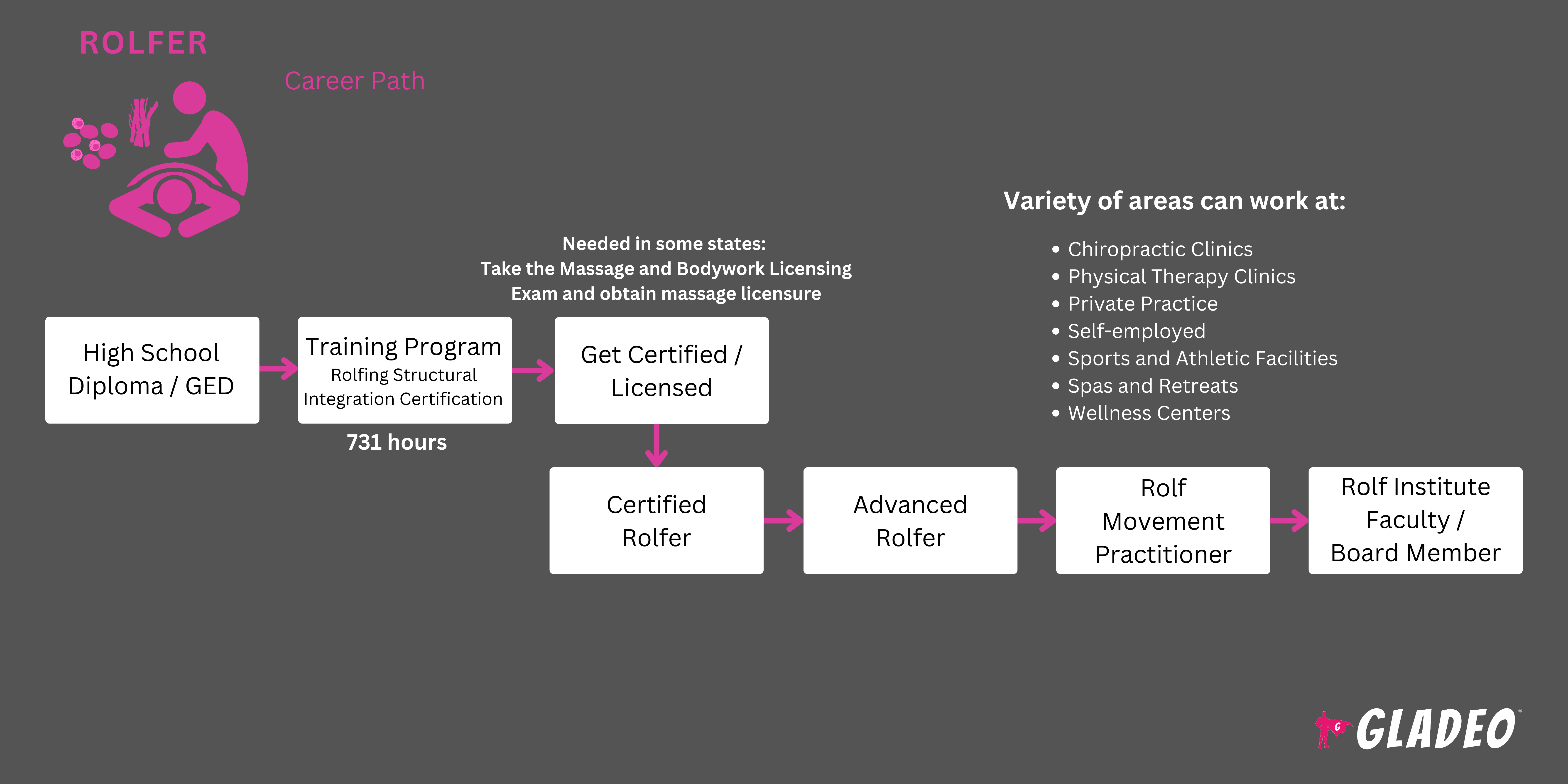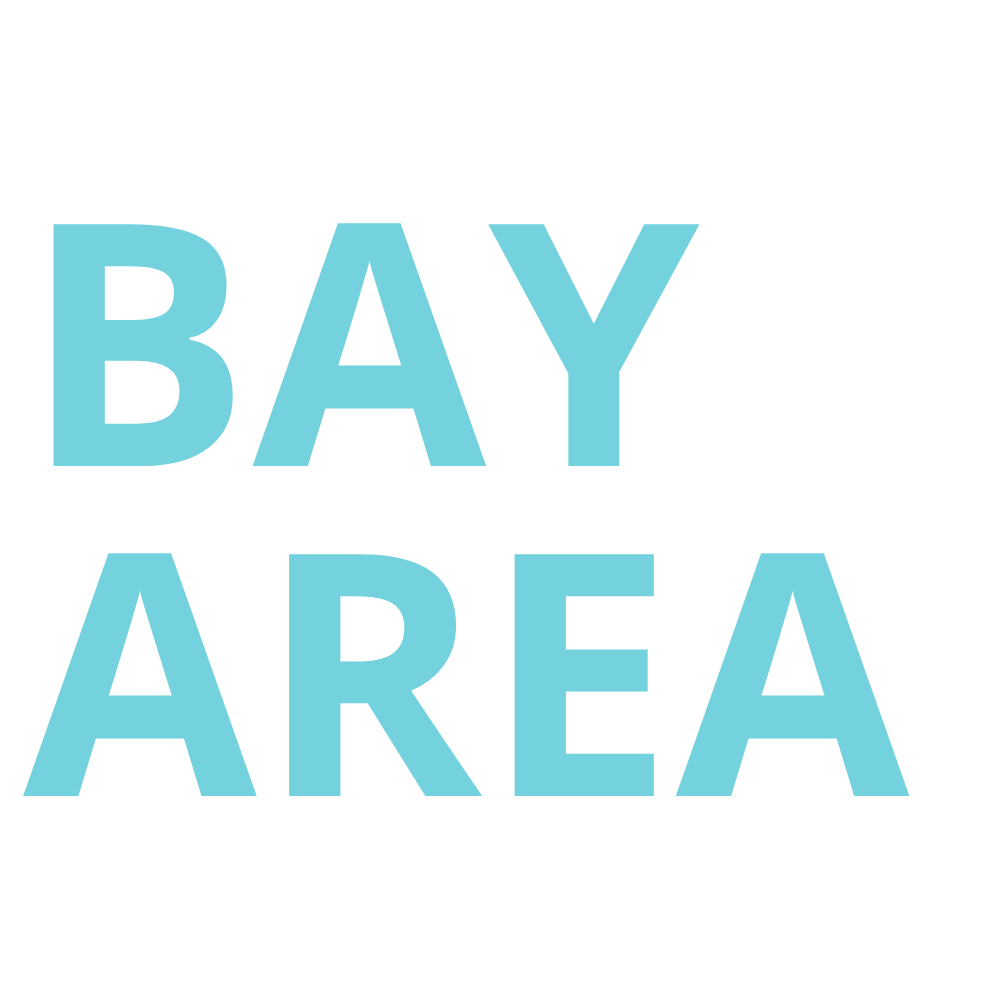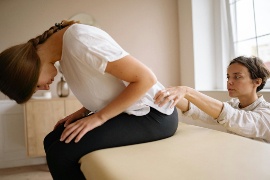聚光灯
按摩治疗师、物理治疗师、脊椎按摩师、肌筋膜释放治疗师、颅骶疗法治疗师
你是否好奇是什么将我们的肌肉、骨骼、神经和器官固定在原位?在皮肤之下、遍布全身的,是层层交织的网状结缔组织——筋膜。这张筋膜网络提供了结构支撑,使身体各部分能够作为一个整体协同运作。
由于筋膜系统相互连通,身体某处的损伤或功能受限会波及其他部位,从而引发疼痛、紧绷、紧张和姿势不良等症状。针对这些症状有多种治疗方式,包括拉伸按摩、物理治疗、止痛药物,甚至手术。而鲜为人知的一种选择是——找罗尔夫疗法师!
罗尔夫疗法(Rolfing)是一种深度组织按摩技术,通过操作筋膜来矫正身体错位、恢复弹性并消除不适感。表面上看,这种疗法与按摩疗法相似,但罗尔夫疗法的关注范围更广,不仅限于肌肉放松和压力缓解。
罗尔夫疗法以生物化学家艾达·罗尔夫博士命名,自1971年创立以来日益普及。此后衍生出多种变体体系——但美国境内唯一能接受原版整体罗尔夫疗法培训并获得认证的机构,唯有科罗拉多州的艾达·罗尔夫博士研究所(DIRI)!
工作日程
- 罗尔夫按摩师通常从事全职工作,每日可能需要投入4至6小时为客户提供直接的手法治疗。许多罗尔夫按摩师以自由职业者身份执业,或在整体健康中心、水疗中心或私人诊所工作。自主经营者还需投入时间处理业务相关事务。
典型职责
- 为客户安排首次咨询。讨论其症状并评估身体的物理对齐状况。
- 识别并针对慢性疼痛、活动受限或损伤区域进行治疗。
- 定制方案以帮助缓解客户的症状并矫正其姿势。
- 向客户说明他们在治疗过程中应有的预期。
- 请注意,罗尔夫按摩师通常建议客户完成10次疗程的治疗,并根据需要进行常规维护疗程。
- 讨论可能存在的禁忌症(如有)。例如,罗尔夫按摩师在处理任何曾接受过外科手术的身体部位时,可能需要格外谨慎。
- 实施手动理疗技术以调整身体的筋膜组织。在治疗过程中实时监测客户的反应。鼓励开放式沟通与反馈交流。
- 每次训练结束后评估客户的姿势和活动能力。
提供训练后的护理建议,例如补充水分、休息或避免特定活动。 - 向客户讲解身体力学原理、动作模式,以及如何在两次治疗间隔期间维持改善效果的方法,例如锻炼和拉伸。
- 根据客户的治疗计划安排后续疗程。
- 做好记录,倾听客户反馈,并监控进度。
- 根据需要调整治疗方案。
额外职责
- 保持治疗环境的卫生与宁静。按摩床需保持清洁且处于良好状态。
- 帮助客户在治疗过程中保持放松状态。为正在克服身体不适的客户提供激励支持。
- 遵循当地及国家关于车身维修操作的指导方针。
- 及时掌握最新进展。若有助于拓展职业领域的知识储备,可参加解剖学、生物力学及罗尔夫按摩技术等持续进修课程。
- 对于自主创业者:
- 获取营业执照并租赁合适的工作场所。
- 打造一个放松的私人工作空间,远离干扰和外界噪音。
- 推广和宣传业务。通过网站、Google商家资料、社交媒体及其他合适平台建立企业的线上形象。
- 遵守健康广告标准。避免对所提供服务作出医疗功效宣称。建议从改善体态、增加活动范围、增强身体感知等益处角度描述服务内容。
- 与脊椎按摩师、物理治疗师及健康管理师合作,通过转诊建立客户群。
- 开发一种高效的方式,让客户能够预约服务并完成支付。
- 建立并维护良好的客户关系,以促进业务重复发生。
实施客户留存策略,例如发送跟进邮件、提供个性化治疗进展更新、推出忠诚度计划或安排术后随访。 - 订购工作所需用品,例如按摩油、毛巾、消毒剂、香薰蜡烛或其他办公用品。
- 购买责任险、职业责任险及财产险。
- 记录收入和支出。提交州税和联邦税。
软技能
- 分析性
- 注重细节
- 沟通
- 协调
- 决策
- 同理心
- 人际交往能力
- 激励技巧
- 问题解决
- 时间管理
技术技能
- 对解剖学、生理学和生物力学有深刻理解。
- 罗夫按摩技术及筋膜操作原理的知识。
- 评估和矫正姿势失衡的能力。
- 精通观察动作模式与身体对位。
- 熟悉整体健康实践和辅助疗法。
- 慢性疼痛管理的理解。
- 记录保存与文件编制能力。
- 敏捷性、力量和耐力。
- 自雇人士
- 水疗中心与健康中心
- 私人执业
- 康复设施
- 运动医学诊所
罗尔夫按摩师常为慢性疼痛或活动障碍患者提供服务,因此这份工作需要极强的同理心和耐心。此外,罗尔夫按摩是体力消耗较大的工作,按摩师必须持续锻炼并保持充沛的体力与耐力才能胜任。
自雇人士需要管理各类业务相关事务,包括维持适宜的工作空间、开展宣传推广、安排预约时间、收取费用、保存财务记录以及缴纳税款。初创阶段往往面临客户资源匮乏的困境,因此罗尔夫按摩师必须坚持不懈地推广服务,并采取有效的营销策略。
罗尔夫按摩的最新趋势凸显了其在辅助疗法中的日益重要作用,尤其针对慢性疼痛和活动能力问题。例如,研究表明罗尔夫按摩可能有助于改善慢性腰痛管理,并提升痉挛性脑瘫患者的运动功能。
此外,罗尔夫按摩在管理纤维肌痛方面展现出潜力,研究表明治疗数月后疼痛、焦虑和抑郁症状均有所减轻。这凸显了罗尔夫按摩作为长期症状管理支持机制的潜力。
过去十五年间,筋膜研究取得了巨大进展——自二十一年前我接受罗尔夫按摩培训以来,已涌现出大量新发现!
我喜欢持续关注这项研究,以便自身掌握知识,从而能正确指导客户。筋膜是罗尔夫按摩疗法中我们主要作用的组织(与肌肉、肌腱、韧带和内脏并列)。
艾达·P·罗尔夫博士(罗尔夫按摩创始人)早在1940年代就认为筋膜是"人类健康中未被预见的驱动力"。此后,我们获得了大量经研究验证的新证据,证实筋膜在运动机能、神经传导及心理情绪现象中的关键作用。" ——马修·哈特曼,结构整合身体疗法罗尔夫按摩师
罗尔夫疗法师可能热衷于瑜伽、舞蹈或运动等强调身体觉察的活动。他们很可能从小就对按摩或物理治疗产生兴趣,并怀有帮助他人的热忱。
我的日常其实相当简单。通常每周五天,朝九晚五工作。每小时接待一位客户,每次约一小时。每天开始前,我会花30分钟回顾每位客户上次预约的记录,为每次会面做好准备。
在我的工作中,卫生至关重要,因此每次疗程之间都必须洗手,并为每次疗程准备干净的床单、枕套和毛毯。"—— 马修·哈特曼,结构整合身体疗法罗尔夫疗法师
- 在美国,学生可通过科罗拉多州博尔德市的艾达·罗尔夫博士研究所(DIRI)提供的罗尔夫结构整合(RSI)认证课程接受培训。
- 加拿大、巴西、德国和日本也设有经授权的国际罗尔夫疗法学校。
- DIRI的RSI课程为期28周,包含三个阶段及各阶段间的休息期。整个RSI培训共计731学时,涵盖解剖学、生理学和运动学课程,同时包含罗尔夫按摩技术实践及监督实践环节。
- 部分州要求罗尔夫按摩师与按摩治疗师一样必须持证上岗。在这种情况下,罗尔夫按摩师可能需要通过按摩与身体疗法执照考试(MBLEx)https://fsmtb.org/mblex/。该考试的具体要求可能包括:
- 年满18周岁
- 通过考试
- 完成经批准或认证的按摩治疗教育项目(例如DIRI提供的RSI培训)规定的最低学时要求。
- 学生也可选择参加DIRI的罗尔夫运动®整合(RMI)认证课程以及高级罗尔夫按摩®认证课程。
- 继续教育课程也提供以促进职业发展。
- 罗尔夫按摩师无需大学学历。在美国,科罗拉多州博尔德市的艾达·罗尔夫博士学院(DIRI)是唯一经认证的培训机构,提供罗尔夫按摩®结构整合(RSI)认证课程。
- 请注意,国际结构整合师协会提供与罗尔夫疗法类似的替代项目,部分项目甚至源自罗尔夫疗法。只是他们不能使用注册商标"Rolf"品牌!
- DIRI为非DIRI结构整合从业者提供成为DIRI会员的途径。
- 科罗拉多州博尔德市的艾达·罗尔夫博士学院(DIRI)开设为期28周的罗尔夫按摩®结构整合(RSI)认证课程。
- 受罗尔夫按摩启发而发展出的结构整合疗法,可通过国际结构整合师协会(IASI) 认证的课程进行学习。
- IASI代表了广泛的结构整合从业者群体,包括接受过罗尔夫按摩(Rolfing)及相关疗法培训的专业人士,例如:
- 解剖列车结构整合
- 赫勒工作结构整合
- 动能肌筋膜整合疗法
- SOMA 神经肌肉整合疗法
- 核心结构整合
- 完成IASI课程的学生可参加结构整合认证考试。
- 选修高中生物学、解剖学和体育课程,为掌握人体力学原理打下基础。
- 参与体育运动、坚持规律锻炼或练习瑜伽、普拉提等活动均有益处,因为这些活动能让人亲身体验与人体运动相关的运动学原理。
- 在健康中心、水疗中心或按摩疗法机构担任志愿者或兼职工作。
- 通过工作坊或在线课程探索身体疗法技术,涵盖按摩疗法或运动教育等领域。
- 与其他身体疗法从业者建立联系。加入整体健康协会或与健康养生相关的学生社团。
- 观看YouTube上关于罗尔夫按摩、按摩疗法、运动疗法和物理治疗的视频。
- 阅读关于罗尔夫按摩疗法的研究和文章,并参与诸如Reddit.com/r/Rolfing/等讨论论坛。
- 订阅DIRI期刊《结构、功能、整合》。
建立良好的沟通与人际交往能力!我的执业工作中很大一部分是与个体进行互动。在此过程中,我必须处理一个人的诸多层面:身体状况、心理状态、生活境遇、家庭关系、病史、过往创伤经历等等。
有效的沟通与人际交往能力,使我能够为每位客户的各个层面提供支持空间。此外,基础科学、解剖学和生理学也是有益的学习领域。在当地社区学院参加业余按摩课程,是了解触觉疗法概念的好方法。"—— 马修·哈特曼,结构整合身体疗法罗尔夫疗法师

网站
书籍
- 《解剖列车:肌筋膜经络的结构与功能》学习指南,托马斯·迈尔斯著
- 罗尔夫疗法与物理现实,作者:伊达·P·罗尔夫
- 无尽之网:筋膜解剖学与物理现实,路易斯·舒尔茨 著
罗尔夫按摩师是健康与养生领域的重要成员,却常被低估。由于许多人对罗尔夫按摩不熟悉,在某些地区——尤其是在职业生涯初期——往往难以获得足够的客户。
若您想探索其他选择,不妨看看我们下面列出的替代职业清单!
- 运动训练师
- 脊椎按摩师
- 运动生理学家
- 健身教练
- 健康教练
- 按摩治疗师
- 医疗与健康服务经理
- 职业治疗师
- 私人教练
- 物理治疗师
- 物理治疗助理
- 普拉提教练
- 康复治疗师
- 运动医学医师
- 瑜伽教练
若您对罗尔夫按摩感兴趣,我强烈建议您接受由认证罗尔夫按摩师提供的十次系列疗程。该系列疗程奠定了艾达·罗尔夫理论体系的基础,整个过程将带来深刻的蜕变体验。
通过艾达·罗尔夫博士研究所(www.rolf.org)。若您决定接受罗尔夫疗法培训,建议寻找经验丰富的罗尔夫治疗师,在培训结束后由其指导您数年。"——马修·哈特曼,结构整合身体疗法罗尔夫治疗师
新闻源

精选职位

在线课程与工具

年薪预期
新员工起薪约为3.4万美元。年薪中位数为5.1万美元。经验丰富的员工年薪可达10万美元左右。
年薪预期
新员工起薪约为3.8万美元。年薪中位数为5万美元。经验丰富的员工年薪可达7.6万美元左右。
年薪预期
新员工起薪约为34,000美元。年薪中位数为57,000美元。经验丰富的员工年薪可达107,000美元左右。






